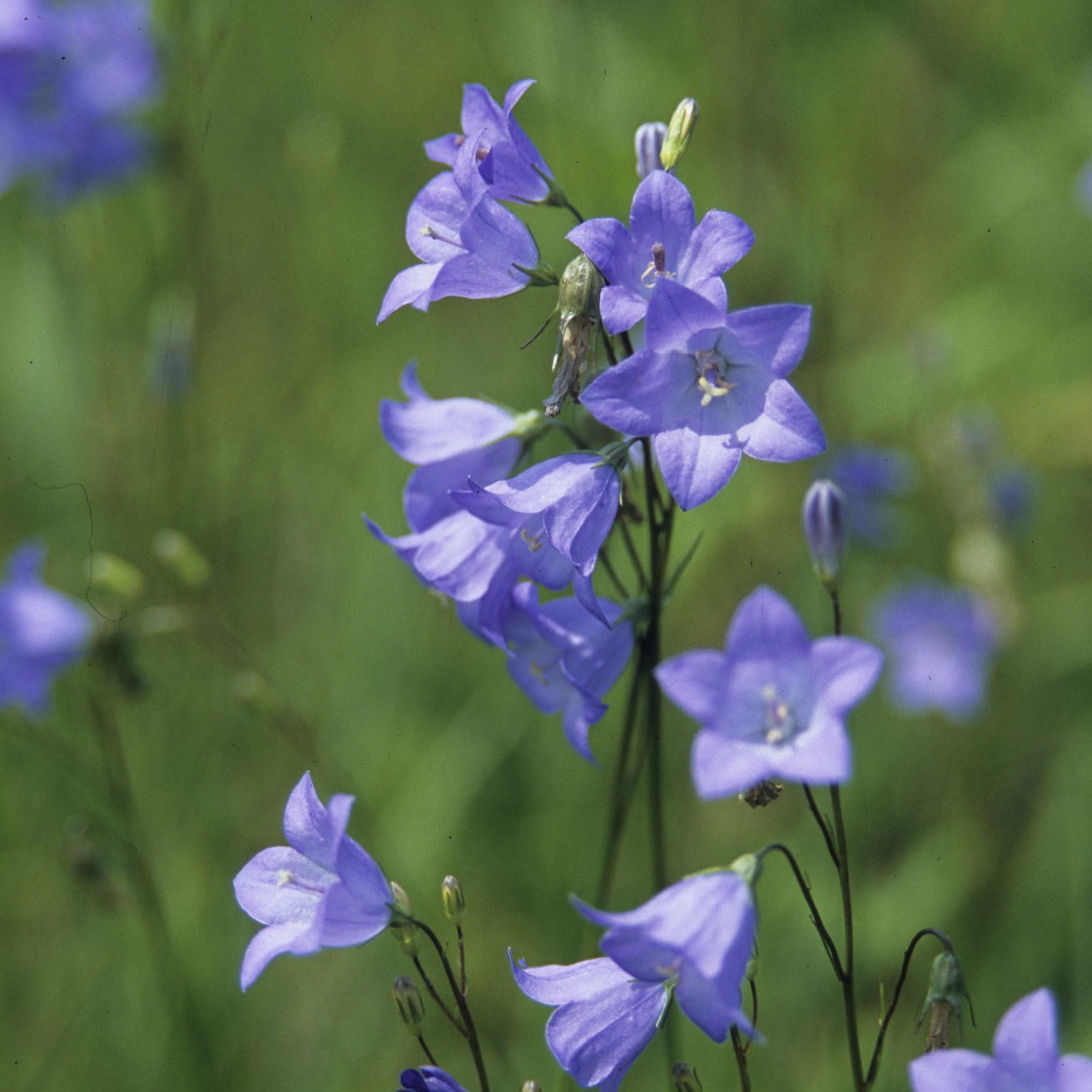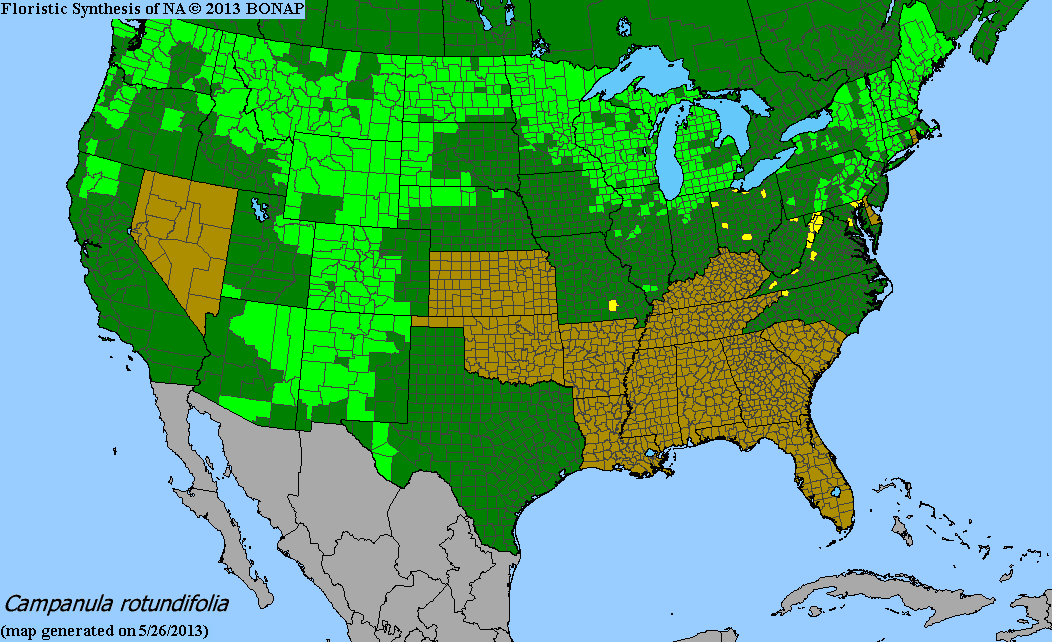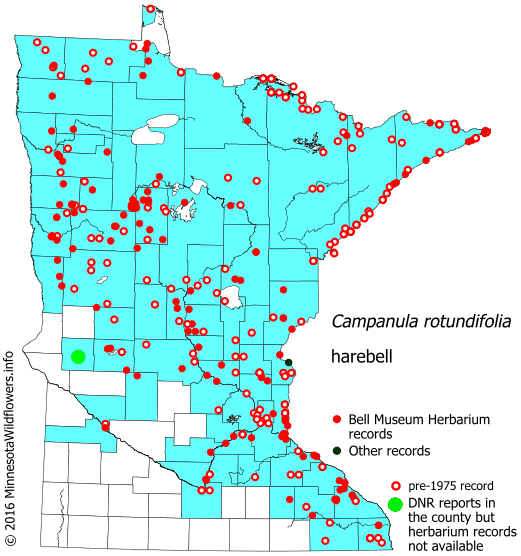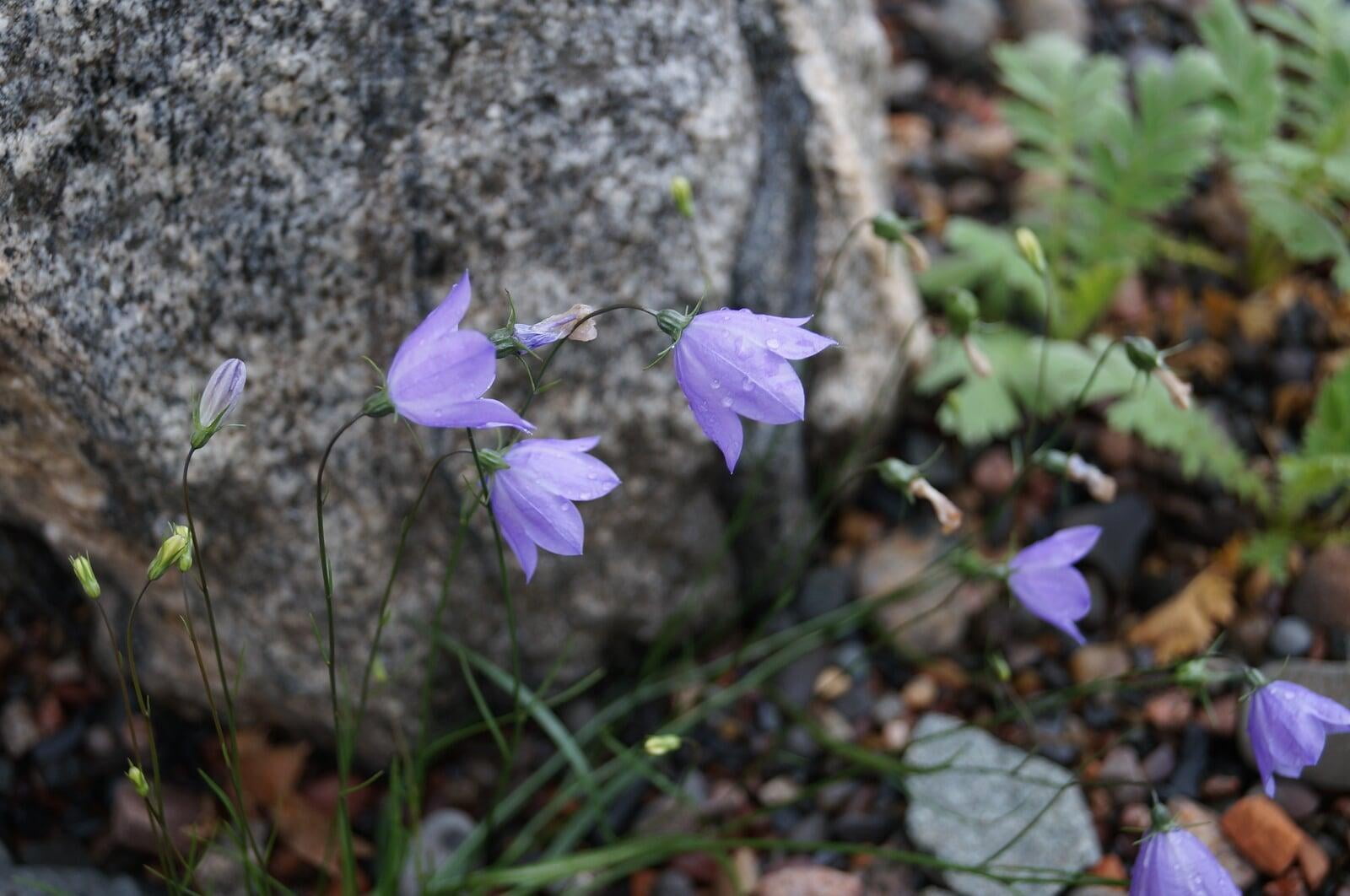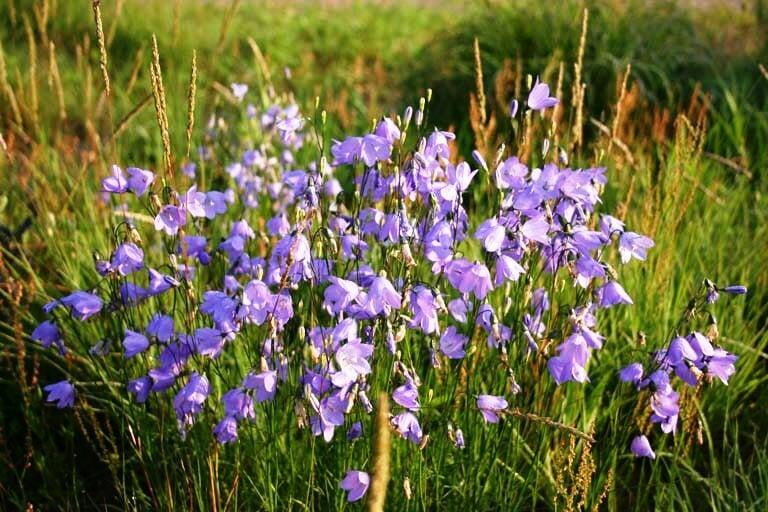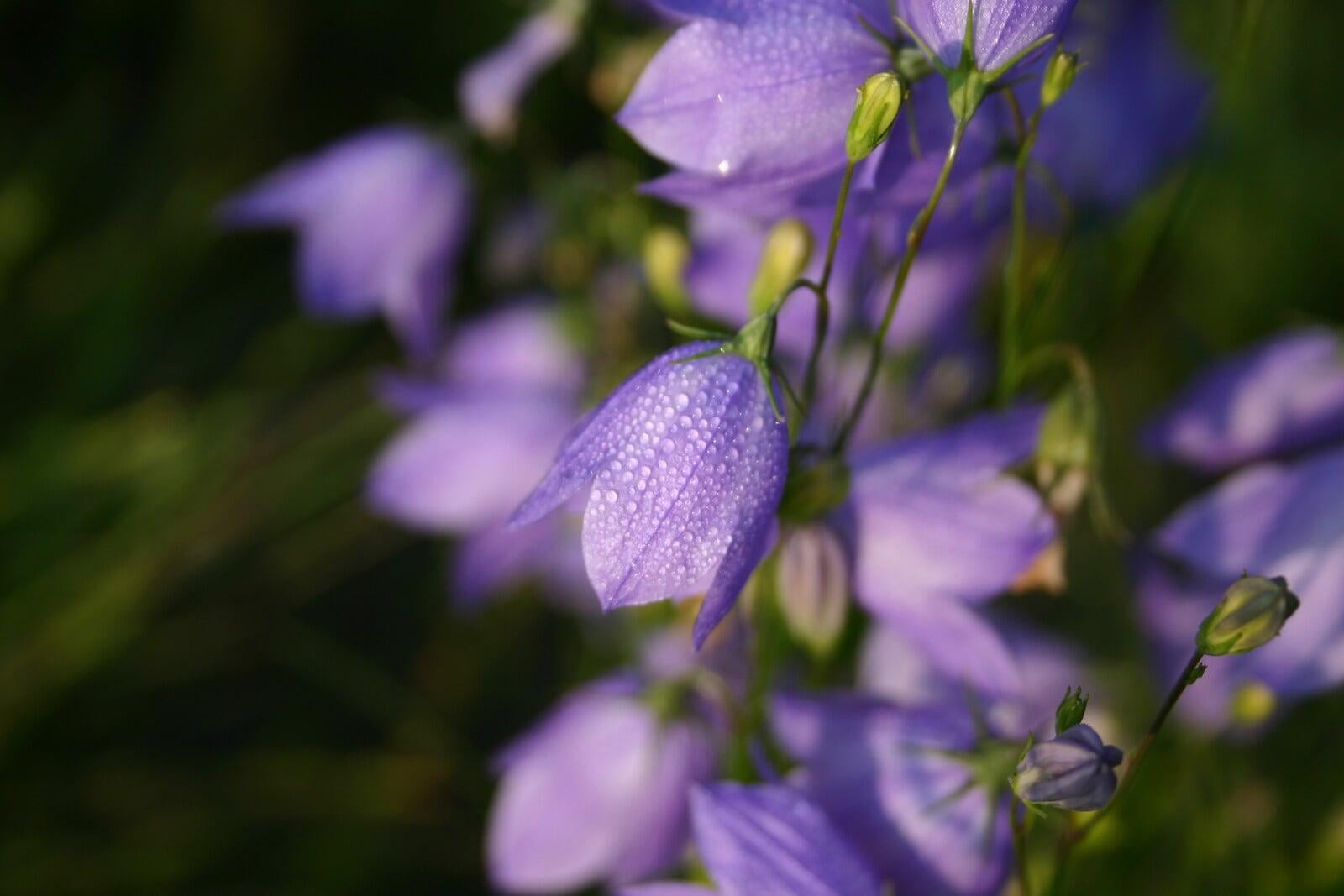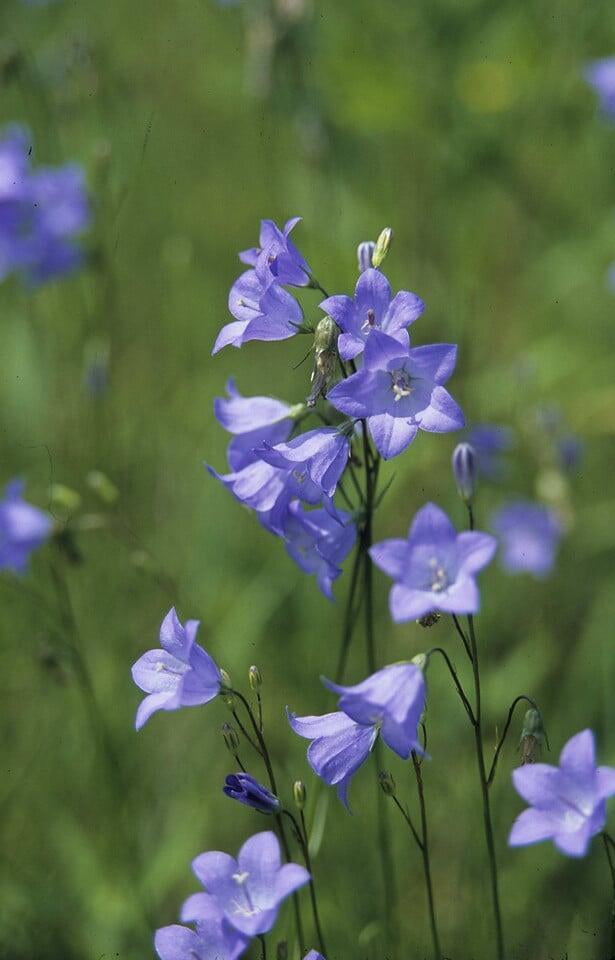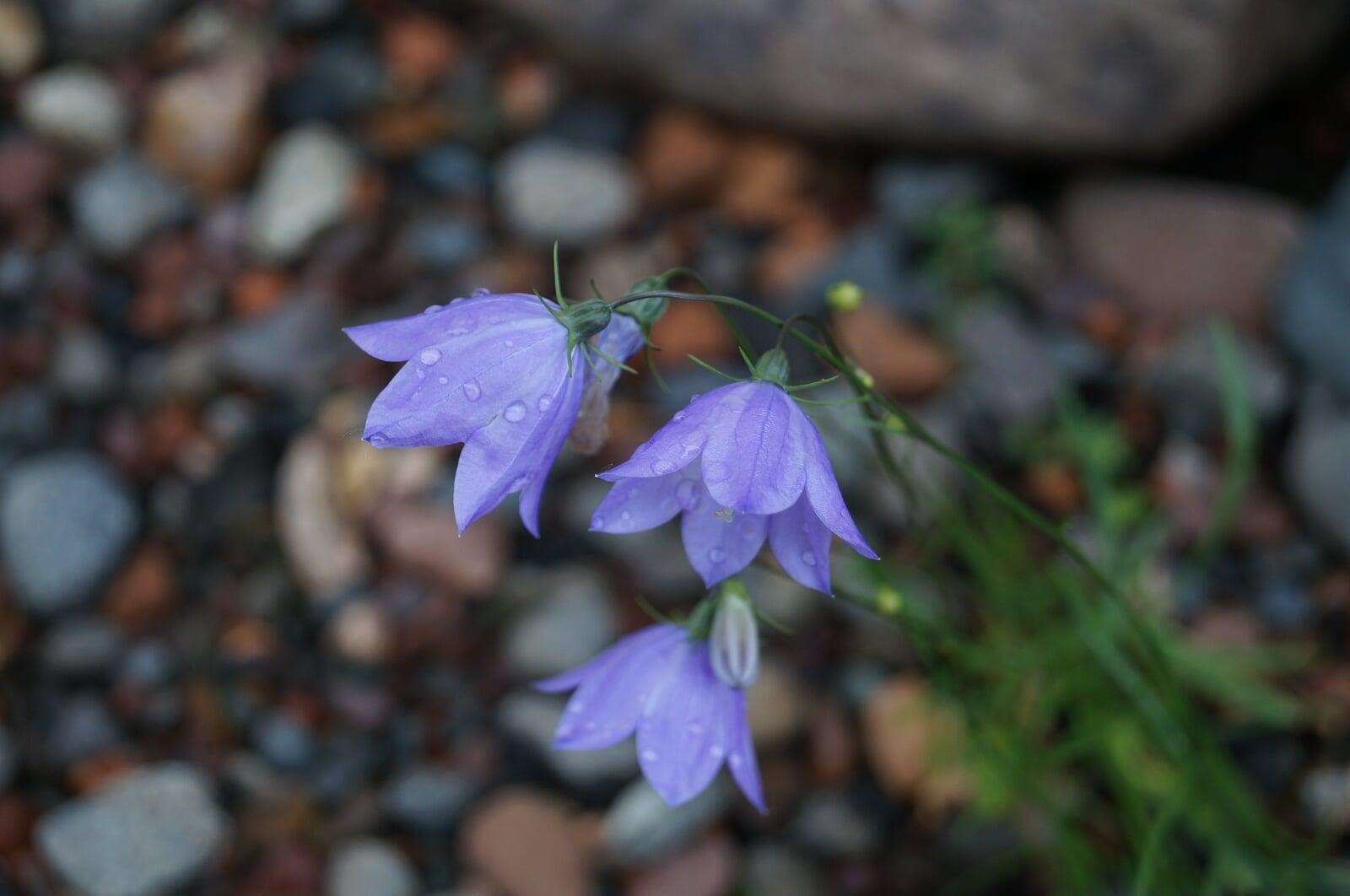Campanula rotundifolia
Harebell Description:
Campanula rotundifolia, commonly known as harebell or bluebell, is a wildflower that is native to Europe and North America. It is a herbaceous perennial plant that belongs to the Campanulaceae family.
The plant typically grows to a height of about 6-20 inches and has slender, wiry stems that are topped with delicate, bell-shaped flowers. The flowers are about 0.8-1.2 inches in diameter and are typically blue, although they may also be pink or white. The leaves are small and rounded, and the plant forms a clump of foliage that is about8-12 inches wide.
Campanula rotundifolia is a versatile plant that can be grown in a variety of settings. It is often used in cottage gardens or rock gardens, where it adds a delicate, airy quality to the landscape. The plant is also useful as a ground cover or border plant, where it can form a dense mat of foliage and flowers.
Harebell is a popular ornamental plant that is valued for its delicate beauty and low-maintenance requirements. It is a hardy plant that is easy to grow and can tolerate a wide range of growing conditions. The plant is also an important wildlife habitat and serves as a source of food and shelter for bees, butterflies, and other pollinators.
Overall, Campanula rotundifolia is a lovely plant that adds grace and beauty to any garden or landscape. Its delicate blue flowers and easy-to-grow nature make it a popular choice for gardeners and landscapers alike.
Native Range:
harebell is found natively in Minnesota, particularly in central and Northeastern regions. More broadly, this plant can be found as far West as California and as far East as Maine. Generally, Harebell is not found in the Southeastern portions of the United States.
Standard Plant Information:
Plant Height: 6" - 20"
Bloom Time: June - October
Preferred Habitat: Does well in part shade to full sun. Often found on rocky slopes, open woods, and meadows.
Sowing:
For most homeowners, the best option is to scatter seed on the ground by hand broadcasting at a minimum of 16-64 pls ounces per acre. For even coverage, we recommend that you broadcast seed in perpendicular rows across the site to ensure even coverage.
You’ll want to broadcast any grass seed first, which will get raked into the soil lightly. Next, it is ideal to mulch the area lightly with either a clean (no seed) straw or preferably with our native Little Bluestem straw, sold at our retail garden centers. After a light mulching is complete, now it’s time to broadcast your native wildflower seeds, which should not be raked into the soil. A good rain or watering is sufficient to cover the seed.
Planting:
Simply dig a hole in the soil slightly larger than the plant’s roots. Ensure that the soil line of the plant is maintained during the transfer (i.e. the plant should be at the same level with the ground as it was in the pot). Pack any loose dirt back around the plant and make sure you water it well the same day to ensure it has the best chance of survival.

